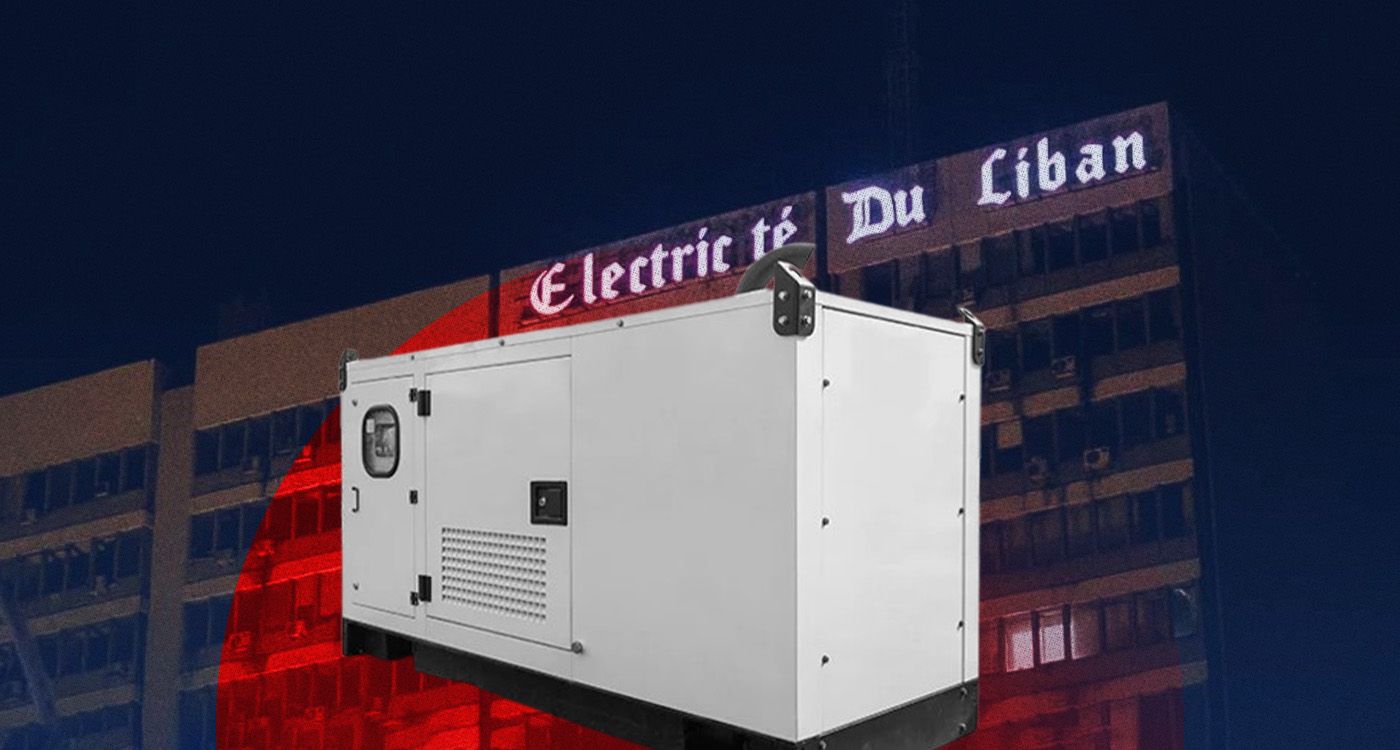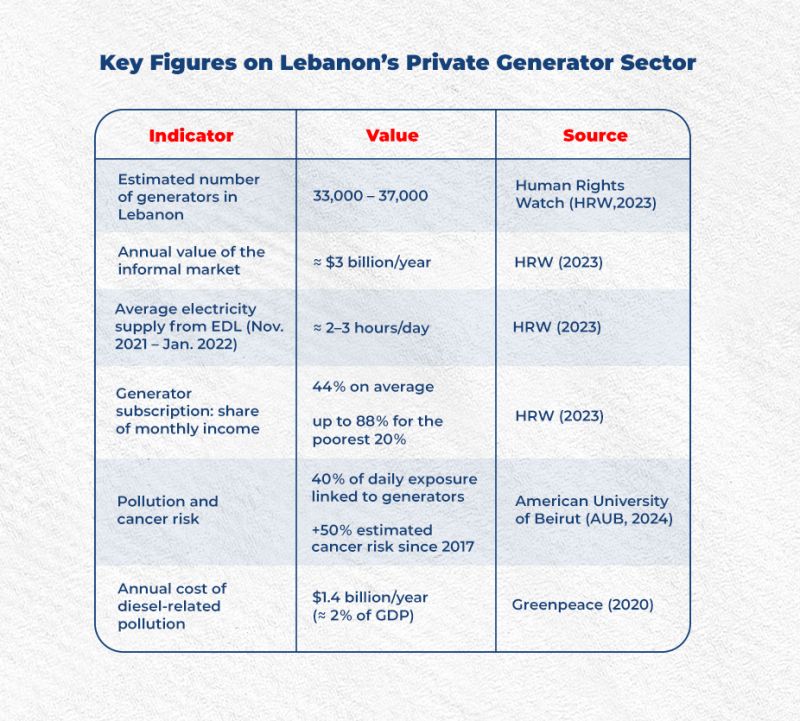
On Wednesday, the Lebanese government announced a crackdown on one of the most visible symbols of the country’s failed public electricity sector: private generators. During a ministerial meeting chaired by Prime Minister Nawaf Salam, operators were given a maximum of 45 days to comply with legal and environmental standards. After that deadline, violators will face fines, confiscation of their equipment, or even legal action.
A circular signed the same evening by Salam requires the installation of certified electronic meters and filters that meet technical specifications, along with strict adherence to the pricing set by the Ministry of Energy and Water. It also reiterates key laws currently in force: those concerning environmental protection (2002, 2018, 2020), generator pricing and consumer protection (2005, 2011, 2019), and safety and fire prevention standards in buildings (2012).
With high costs, widespread pollution and growing inequalities, Lebanon’s private generator sector raises pressing questions about its overall impact and sustainability.
An Expansive and Lucrative Sector
According to Human Rights Watch (HRW), Lebanon’s informal diesel generator market generates about $3 billion a year, with an estimated 33,000 to 37,000 units operating nationwide.
Before the economic crisis that hit in October 2019, private generators supplied up to 40% of household electricity needs. Since then, reliance on them has surged, though no official figures are available.
An HRW survey of more than 1,200 households conducted between November 2021 and January 2022 found that the average home received public electricity from Électricité du Liban (EDL) for only 10% of the day – roughly two to three hours. Before the crisis, respondents recalled getting around 12 hours of EDL power daily.
The sector employs around 13,200 people: 4,200 in fuel import and distribution, 2,000 in generator sales and maintenance, and 7,000 in local distribution.
Before the crisis, a 500 kVA generator – which made up over 70% of the fleet – earned between $17,000 and $22,000 per month, or roughly $240,000 annually. Mega-generators could bring in as much as $211,000 monthly.
Such enormous profits sustain an informal network of power and influence, linking generator owners, diesel importers and political actors in a full-fledged “mafia” that protects its interests and blocks any meaningful reform.
Steep Charges and Deepening Inequality
The HRW survey found that the average cost of a generator subscription consumes 44% of a household’s monthly income – and up to 88% for the lowest-income fifth of households with access to one. For nine out of ten families, these steep bills force cuts to essentials such as food, healthcare and education.
These costs are compounded by regular increases in the kilowatt-hour rate set by the Ministry of Energy and Water. In July 2025, the official rate rose from 31,634 LBP (≈$0.35) to 32,790 LBP (≈$0.37), with a 10% surcharge for rural areas. Fixed monthly fees for a standard subscription range from 385,000 LBP (≈$4.29) to 685,000 LBP (≈$7.64), depending on amperage, with additional charges for extra brackets or three-phase connections, such as elevators.
In practice, many operators charge far above the official rate – often abusively – taking advantage of weak enforcement.
Pollution and Health Hazards
Reliance on diesel generators comes at a heavy environmental and health cost. A study published in April 2024 by the American University of Beirut, led by MP Najat Aoun Saliba, an atmospheric chemistry expert, found that since 2017, levels of cancer-causing pollutants from diesel generators have doubled in three areas of Beirut.
In the Makassed neighborhood, fine particle pollution reached 60 µg/m³ – four times the World Health Organization’s recommended short-term exposure limit for a few days per year.
The study also found that diesel generators account for 40% of the average Lebanese person’s daily exposure to carcinogenic substances. This exposure is linked to an estimated 50% increase in cancer risk. Oncologists have reported a 30% annual rise in cancer cases in Beirut since 2020, with patients presenting at younger ages and with more aggressive tumors.
Pollution carries a significant economic cost as well. A 2020 Greenpeace study estimated that pollution from fossil fuels costs Lebanon $1.4 billion annually – about 2% of GDP – factoring in both economic losses and healthcare expenses. The study also attributed 2,700 premature deaths to pollution in 2018, the highest per capita rate in the Middle East, tied with Egypt.

The Longstanding Failure of the Public Electricity Sector
A few years after the end of the Civil War, mismanagement, corruption and a lack of investment drove EDL to a near-total collapse by 2021. Public transfers to EDL have totaled nearly $40 billion in debt since 1992, with no lasting improvement in service. Attempts at reform have repeatedly collided with the interests of diesel importers and political networks with ties to generator operators.
With its latest regulatory push, the Salam government says it aims to “end the chaos” and establish real oversight over this parallel market. Yet many experts argue that only a structural overhaul of the electricity sector – including massive investment in renewable energy – can free the country from its dependence on generators and ensure the right to clean, continuous and affordable electricity for all.



Comments